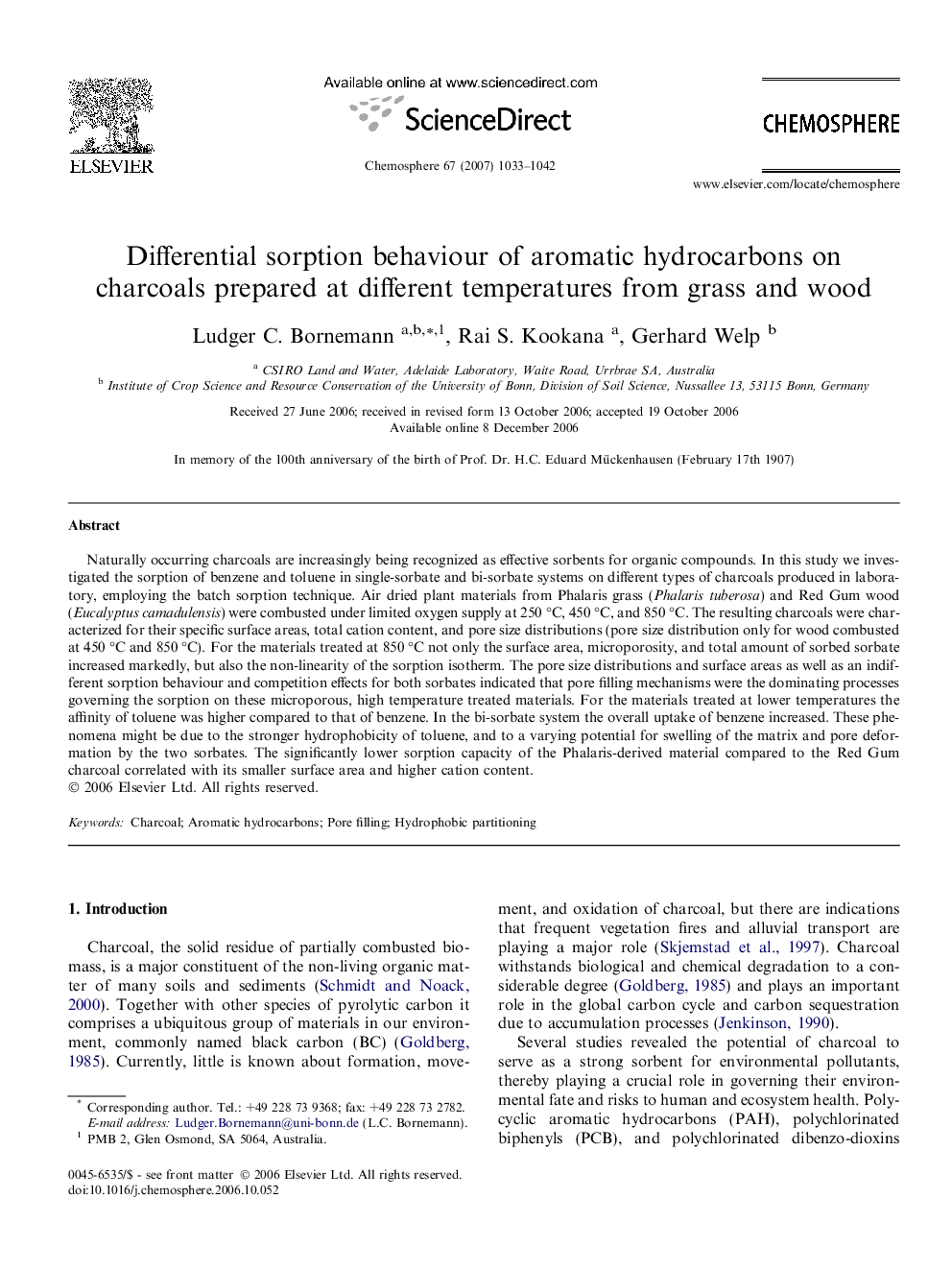| Article ID | Journal | Published Year | Pages | File Type |
|---|---|---|---|---|
| 4415542 | Chemosphere | 2007 | 10 Pages |
Naturally occurring charcoals are increasingly being recognized as effective sorbents for organic compounds. In this study we investigated the sorption of benzene and toluene in single-sorbate and bi-sorbate systems on different types of charcoals produced in laboratory, employing the batch sorption technique. Air dried plant materials from Phalaris grass (Phalaris tuberosa) and Red Gum wood (Eucalyptus camadulensis) were combusted under limited oxygen supply at 250 °C, 450 °C, and 850 °C. The resulting charcoals were characterized for their specific surface areas, total cation content, and pore size distributions (pore size distribution only for wood combusted at 450 °C and 850 °C). For the materials treated at 850 °C not only the surface area, microporosity, and total amount of sorbed sorbate increased markedly, but also the non-linearity of the sorption isotherm. The pore size distributions and surface areas as well as an indifferent sorption behaviour and competition effects for both sorbates indicated that pore filling mechanisms were the dominating processes governing the sorption on these microporous, high temperature treated materials. For the materials treated at lower temperatures the affinity of toluene was higher compared to that of benzene. In the bi-sorbate system the overall uptake of benzene increased. These phenomena might be due to the stronger hydrophobicity of toluene, and to a varying potential for swelling of the matrix and pore deformation by the two sorbates. The significantly lower sorption capacity of the Phalaris-derived material compared to the Red Gum charcoal correlated with its smaller surface area and higher cation content.
